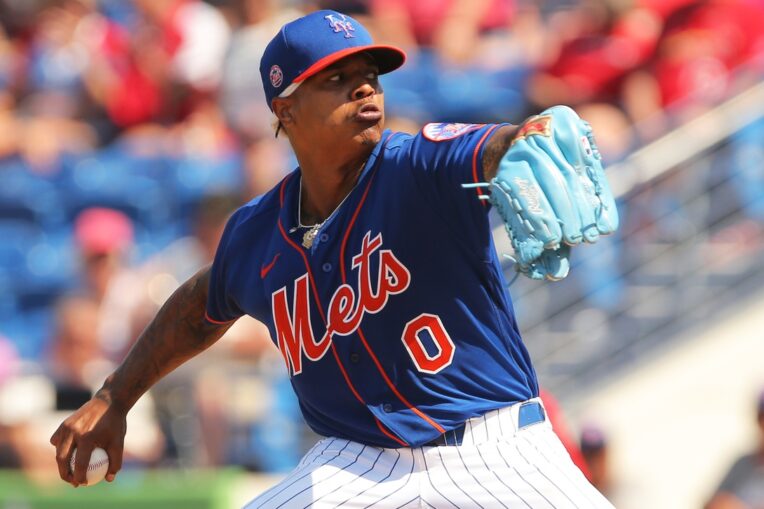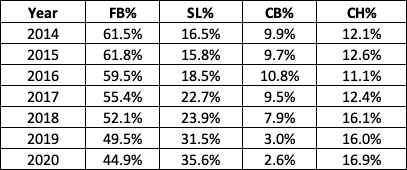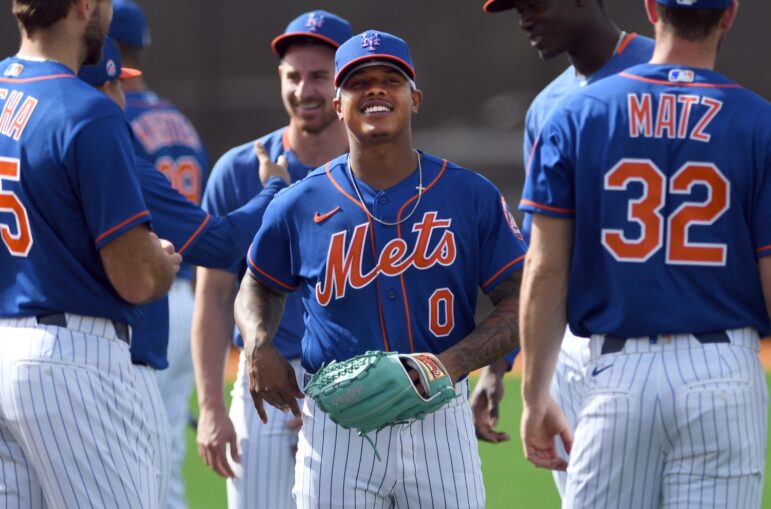
While the New York Mets still have roster moves to make prior to Spring Training, especially when looking at the starting rotation, Marcus Stroman accepting the $18.9 million qualifying offer earlier this offseason helped a ton.
Sure, he didn’t actually pitch last year, but he brings a solid track record and a level of stability to the front of New York’s rotation behind Jacob deGrom that was previously lacking. There’s more work to be done, but having Stro in the mix simplified the Mets’ offseason plan quite a bit.
When Pitcher List’s Alex Fast shared a gif of Stroman’s pitch mix earlier this week, the righty shared the below tidbit as a reply:
New 4-seam and split-change coming soon too. The future excites me!
— Marcus Stroman (@STR0) December 22, 2020
Now, I haven’t taken a hard look around the league, but I feel like this type of stuff doesn’t happen all that often. We’ll hear of a hurler adding a new pitch, or (more often) eliminating one that was underperforming. But for Stro? Yeah, let’s add two more pitches to his bag of tricks. David Goggins, a former Navy SEAL, motivational speaker, and all around baaad man, once said the following:
“If you continue doing things that you’re satisfied and make you happy, you’re not getting stronger. You’re staying where you’re at. Either you’re getting better, or you’re getting worse. You’re not staying the same.”
A lot of people will say this without walking the walk, but Stro takes it to heart. The proof is in the pudding, too. Or, in this case, his FanGraphs page.
Since debuting in 2014, he’s tossed at least 100 innings in a season on five different occasions. He’s posted at least a 3.3 fWAR during four of those seasons. Stroman has also managed to accomplish this with a career strikeouts per nine innings rate of 7.36.
For some perspective, his 15.8 career fWAR since debuting is among the top 30 qualified starters in baseball. The only hurler ahead of him on this list with a lower K/9? Dallas Keuchel, at 7.33. Not toeing the slab every fifth day and blowing guys away with a bunch of strikeouts means Stroman has done an excellent job controlling the zone and the batted-ball events/quality of contact from opposing hitters. That’s evidenced by his 58.7% ground-ball rate since 2014 (third in baseball), as well as being in the top 60 for both soft-hit rate (19.6%) and hard-hit rate (30.9%) allowed.
This is also likely possible because he continually finds ways to change and improve from year to year. After seeing that he’s planning to incorporate two more pitches into his arsenal, I was interested in finding out how his pitch mix has changed each year since breaking into the league with the Toronto Blue Jays. What’s intriguing is that his usage of many pitches have gone on a roller coaster ride over the past few years.

For the sake of comparison, I wanted to throw in deGrom’s pitch mix and usage rates. They both debuted in 2014, and the numbers he’s produced align more with what I’d imagine the majority of pitchers do:

With regard to deGrom, you can see how his changeup usage mostly holds steady, while there’s a consistent drop in fastball and curveball usage that coincides with a huge uptick in sliders. As for Stroman, his changeup usage has also stayed mostly consistent (but a little less than deGrom). However, his fastball and slider usage have gone up and then down, while his cutter and curveball usage have gone down and then up.
Could the emergence of a new four-seamer and a split-change mean those two areas of his arsenal will experience yet another uptick in pitch usage? Well, maybe, but that’s partly why this is genius — it’s impossible for an opposing hitter to know, no matter how much video of past plate appearances they watch.
Making these kinds of adjustments isn’t for everyone. It’s difficult enough to be a good MLB player with their current skills, let alone adding new ones in each year or two. This is the type of stuff that can only be done if said player is comfortable in continually tweaking things along the way and is strong enough mentally to deal with the growing pains that comes with it all.
Stroman has already proven he has no problem evolving as a pitcher over the years, and he’s not going to stop anytime soon – it’s part of what makes him an effective big-league hurler. Let’s hope that leads to great things for him and the Mets in 2021 as he enters his platform year prior to hitting free agency again.















